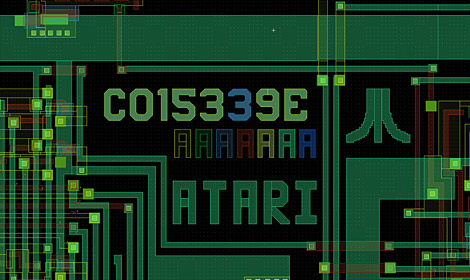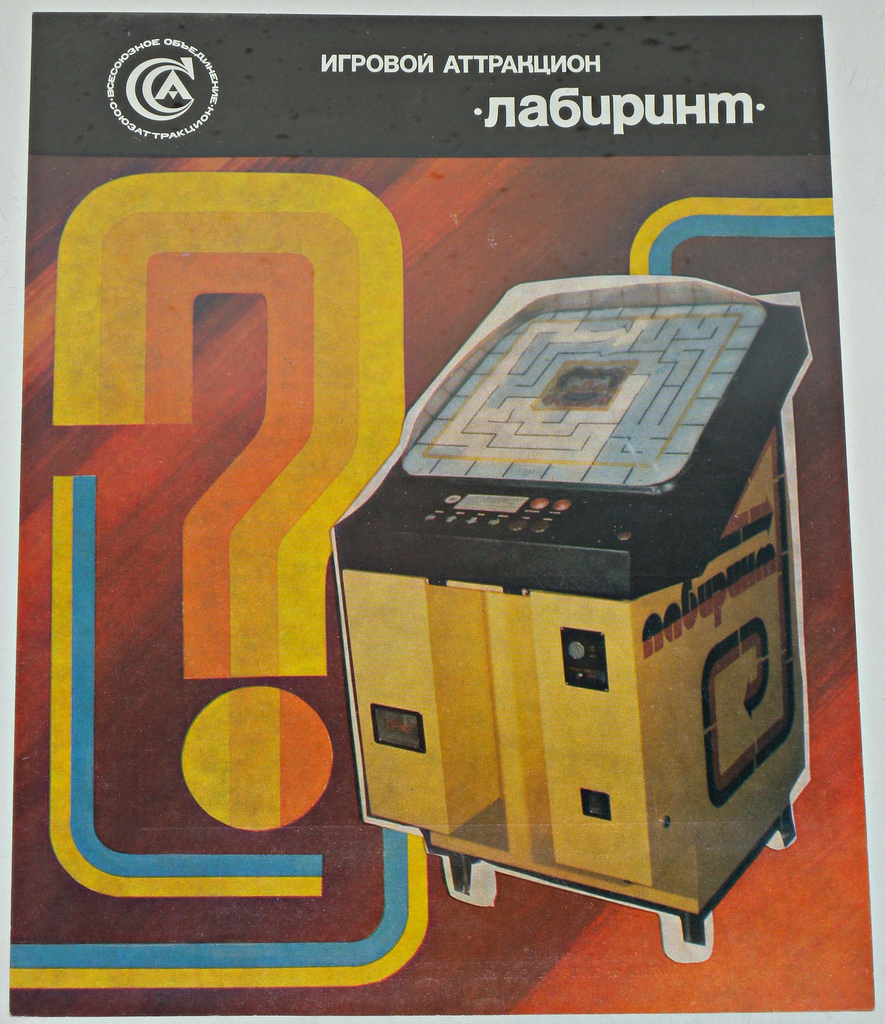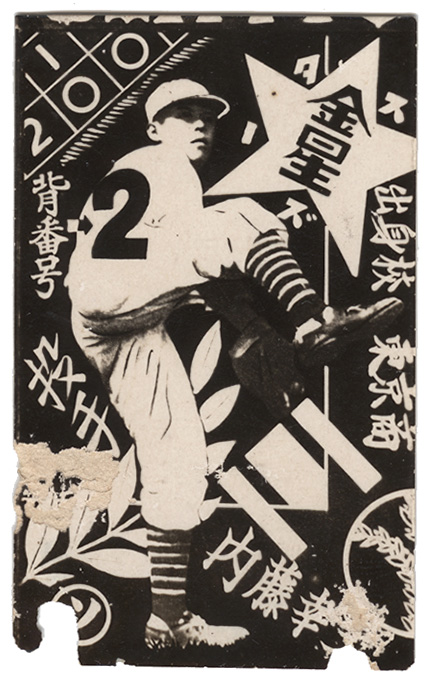Links and write-ups about beautiful things from around the web!
-
The Proprietary 8 Bit Processors That Powered

The proprietary 8-bit processors that powered Atari’s home consoles are being resurrected by the Atari History Museum’s Curt Vendel. He’s rebuilding each chip from the fabrication specification data detailed in the original tape-outs he has in his possession, and hopes to be able to crank out brand new replacement chips (the originals have been unavailable to the enthusiast market for years). This looks to my non-engineer eyes like an impressive feat of reverse engineering and history gathering! If nothing else, one can appreciate the high-res circuit scans he’s posted in the discussion thread.
(Via GameSetWatch)
-
From a Flickr Set of Soviet Arcade Game Posters

From a Flickr set of Soviet arcade game posters. The image of the Russian pinball table Ну, погоди! is interesting to look at from a pinball design history perspective, much better looking than this scary clown table (though still very utilitarian)!
(Via GameSetWatch and countless other blogs)
-
A Parallel Image
[Video no longer available]
A Parallel Image, an installation by Gebhard Sengmüller in collaboration with Franz Büchinger, consisting of an array of sensors, 2500 wires, and small light bulbs to make an “electronic camera obscura” for lo-fi video transmission.
(Via Make)
-
One of the Artists Desires Is to Give an Account
One of the artist’s desires is to give an account of reality and at the same time to protect it against oblivion and death, and this effort is bound to fail; failure is there from the beginning. For example, Giacometti knows that he cannot grasp life: he will do his brother’s bust and his wife’s portrait again and again without ever achieving his aim, but this explicit failure is part of the beauty of his work. Gerhard Richter, quoted in The Claude Glass by Arnaud Maillet, p. 200.
-
FluidPaint: an Interactive Digital Painting System using Real Wet Brushes
https://www.youtube.com/watch?v=fkl782OqqmA&feature=player_embedded
FluidPaint: An Interactive Digital Painting System using Real Wet Brushes. An experimental project by Tom Van Laerhoven of the Hasselt University Expertise Centre for Digital Media in Belgium. Unlike previous digital painting applications, this one uses actual water (detected by a surface-level IR emitter) to record strokes on the surface and more correctly models the tip of the brush being used, whether rounded or fanned, and it can even simulate a sponge. Looks like it makes some convincing watercolor-like images.
More info: Brush Design for Interactive Painting Applications (PDF)
(Via John Nack at Adobe)
-
Magician Marco Tempest Demonstrates a Portable AR Screen
Magician Marco Tempest demonstrates a portable “magic” augmented reality screen. The system uses a laptop, small projector, a PlayStation Eye camera (presumably with the IR filter popped out?), some IR markers to make the canvas frame corner detection possible, Arduino (?), and openFrameworks-based software developed by Zachary Lieberman. I really love this kind of demo – people on the street (especially kids) intuitively understand what’s going on. This work reminds me a lot of Zack Simpson’s Mine-Control projects, especially with the use of cheap commodity hardware for creating a fun spectacle.
(Via Make)
-
Japanese Bromide Baseball Card Prints

Besuboru Bromides, John Gall’s beautiful collection of Japanese baseball card bromide prints (ブロマイド). The full set can be found on his Flickr account, along with a billion other great graphic arts images. I think I need to trawl through his whole photoset now, and pick up his book Sayonara Home Run!…
(Via Monoscope)
-
The Rotating Kitchen
The Rotating Kitchen, an installation by Zeger Reyers that was put into motion at the Kunsthalle Düsseldorf late last month, where it will keep rotating for the next three months. Hypnotic, like an inside-out katamari.
(Via today and tomorrow)
-
MyDsReader: Nintendo DS Text-to-Speech
MyDsReader, Nintendo DS text-to-speech document reading software for the visually impaired. It’s using the Flite synthesis engine designed for embedded devices, implements gesture controls for ease of use and even throws in an integrated email and to-do client. Excellent use of homebrew development.
(Via GameSetWatch)
-
Like the Hero of Willy Wonka and the Chocolate
Like the hero of “Willy Wonka and the Chocolate Factory,” also based on one of his books, the creatures of Dahl’s valley seem to know more than they’re letting on; perhaps even secrets we don’t much want to know. Children, especially, will find things they don’t understand, and things that scare them. Excellent. A good story for children should suggest a hidden dimension, and that dimension of course is the lifetime still ahead of them. Six is a little early for a movie to suggest to kids that the case is closed. Oh, what if the kids start crying about words they don’t know? – Mommy, Mommy! What’s creme brulee?“ Show them, for goodness sake. They’ll thank you for it. Take my word on this.
– From Roger Ebert’s review of Fantastic Mr. Fox
(Via the Ghibli Blog)
